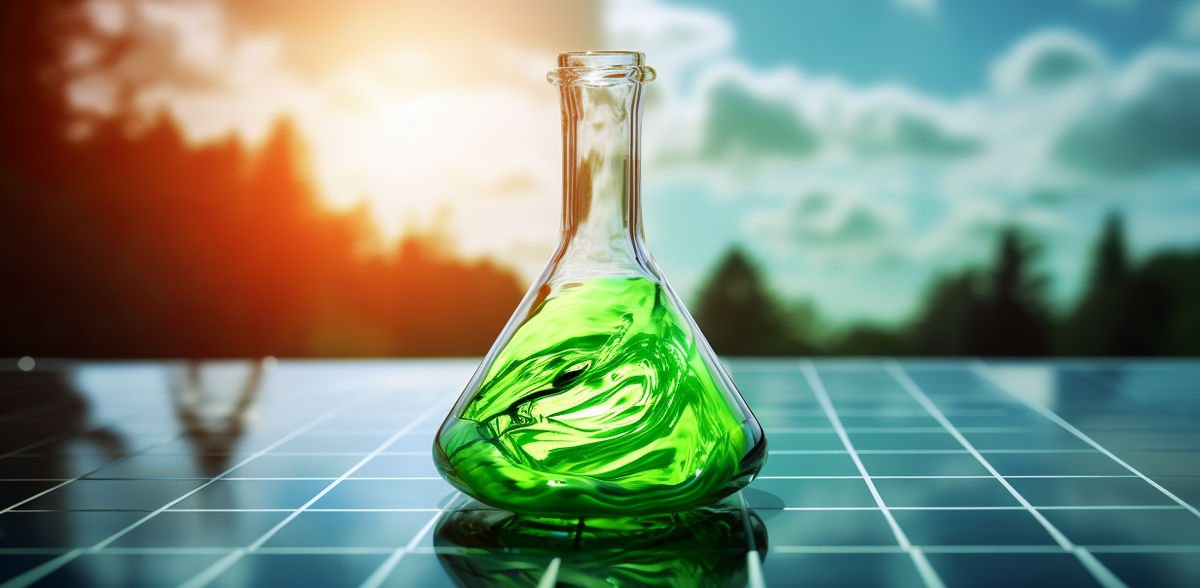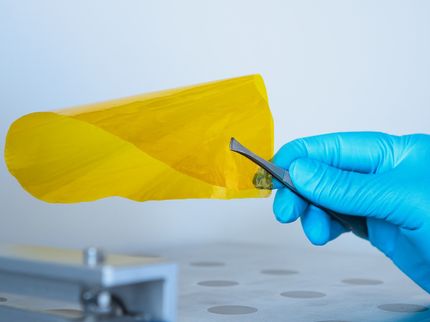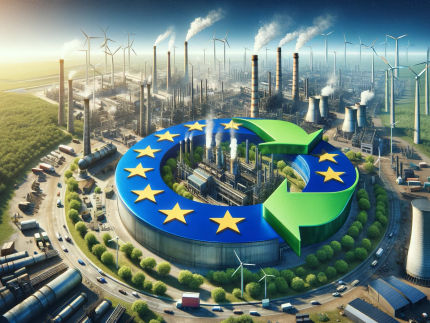Green hydrogen: Co-production of valuable chemicals boosts profitability
Co-production concept is very flexible; different products can be produced in the same plant depending on demand
Advertisement
It is clear that it works: There are already approaches today to use solar energy for the electrolysis of water and to produce hydrogen. Unfortunately, this "green" hydrogen has so far been more expensive than "gray" hydrogen from natural gas. But the production of green hydrogen with sunlight can become profitable, shows a study from the Helmholtz-Zentrum Berlin (HZB) and the Technische Universität Berlin: Some of the hydrogen is used to process raw chemicals from biomass into high-value chemicals for industry. This concept of co-production is very flexible; different products can be manufactured in the same plant, depending on demand.
As soon as possible, we need to go without fossil fuels to limit global warming. In the energy system of the future, "green" hydrogen will therefore play an important role in energy storage, as a fuel and as a renewable raw material for the production of chemicals. Currently, however, hydrogen is mainly produced from fossil natural gas (gray hydrogen). "Green" hydrogen, on the other hand, is produced by electrolysis of water using renewable energy. One promising approach is the use of photoelectrochemical (PEC) plants to produce hydrogen using solar energy. However, hydrogen from PEC plants is still much more expensive than hydrogen from (fossil) methane.
Full control over the reactions
A team led by chemist Fatwa Abdi (at HZB until mid-2023, now at City University in Hong Kong) and Reinhard Schomäcker (UniSysCat, TU Berlin) has now investigated how the balance changes when some of the hydrogen is used to produce methyl succinic acid (MSA) with itaconic acid (IA) - within the same PEC plant. In this case, the feedstock itaconic acid comes from biomass and is fed. Methylsuccinic acid is a high-value chemical required by the chemical and pharmaceutical industries.
In the study, the team describes how the chemical reactions in the PEC plant can be controlled: To do so, they varied process parameters and the concentration of the homogeneous rhodium-based catalyst, which is water-soluble and already active at room temperature. In this way, they were able to use different proportions of hydrogen for the hydrogenation of itaconic acid and selectively up- or down-regulate the production of methylsuccinic acid.
From 11% hydrogen for MSA, the plant becomes economical
At a realistic PEC plant efficiency of 10 percent, and taking into account primary costs as well as operating, maintenance, and decommissioning costs, pure PEC hydrogen production remains too expensive compared to production from fossil methane. This is true even when the life of the PEC plant is assumed to be 40 years.
This balance changes if PEC electrolysis is coupled with the hydrogenation process. Even if only 11 % of the hydrogen produced is converted into MSA, the costs drop to 1.5 € per kilogram of hydrogen and are thus at the same level as for hydrogen from methane steam reforming. This is true from a PEC plant lifetime of only 5 years! Since the market price of MSA is significantly higher than that of hydrogen, more MSA further increases profitability. In the experiment, it was possible to selectively use between 11% and up to 60% of the hydrogen for the production of MSA.
In addition, as the research teams showed in an earlier study, co-production of MSA also reduces what is known as the energy payback period, the time the plant has to run to recoup the energy it cost to produce.
Co-production can be flexibly switched
A major plus of the technology presented here is that instead of MSA, other compounds can in principle also be produced in the plant as co-products if other starting materials and catalysts are used; for example, acetone could be hydrogenated to isopropanol. "We have discovered a promising way here to make solar hydrogen production economical," says Fatwa Abdi.
Note: This article has been translated using a computer system without human intervention. LUMITOS offers these automatic translations to present a wider range of current news. Since this article has been translated with automatic translation, it is possible that it contains errors in vocabulary, syntax or grammar. The original article in German can be found here.
Original publication
Keisuke Obata, Michael Schwarze, Tabea A. Thiel, Xinyi Zhang, Babu Radhakrishnan, Ibbi Y. Ahmet, Roel van de Krol, Reinhard Schomäcker, Fatwa F. Abdi; "Solar-driven upgrading of biomass by coupled hydrogenation using in situ (photo)electrochemically generated H2"; Nature Communications, Volume 14, 2023-9-27






























































